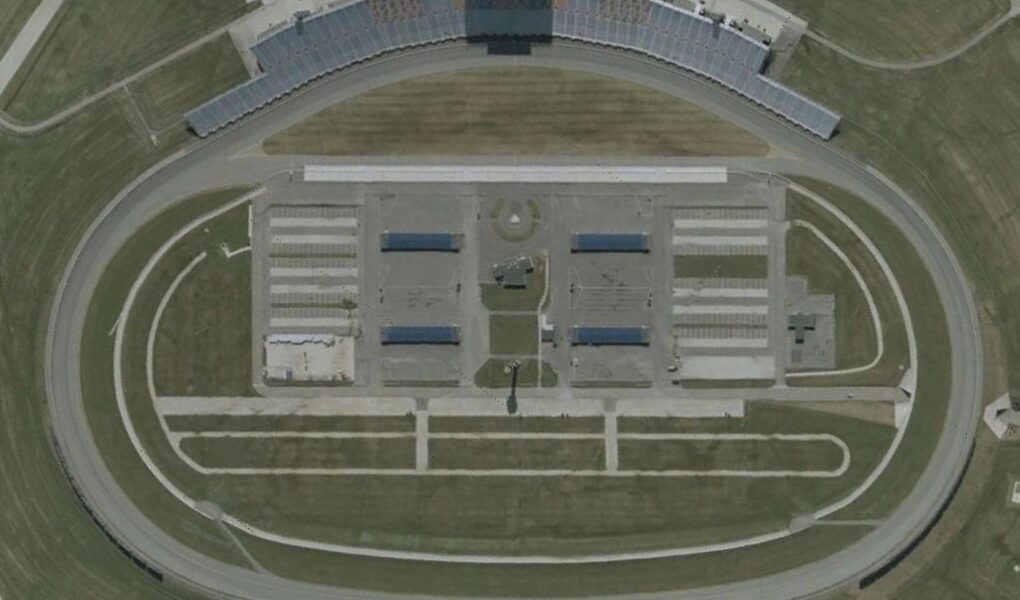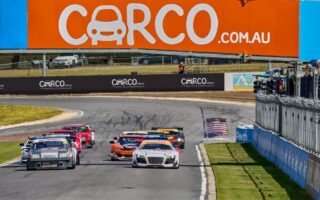As the sun sets over the towering grandstands of Chicagoland Speedway, a bittersweet chapter in motorsport history prepares to close its doors. Once a pulsating hub of adrenaline-fueled excitement, the iconic venue is set to undergo a dramatic transformation as demolition crews begin their work. Yet, beyond the wrecking balls and dust clouds lies a complex tapestry of memories, triumphs, and gatherings that defined not just a racetrack, but a community. This article delves into the significance of the Chicagoland Speedway demolition, exploring its legacy within the world of racing, the reactions from fans and stakeholders, and the visions for the future that await in the wake of its dismantling. From roaring engines to silent echoing stands, we venture into the heart of change and the stories that linger long after the last lap is completed.
Table of Contents
- The Impact of Demolition on Local Economy and Community Identity
- Preserving Historical Significance Amidst Development Plans
- Future Prospects: Reimagining the Space for Sustainable Use
- Engaging Community Voices: A Blueprint for Inclusive Development
- Q&A
- Wrapping Up
The Impact of Demolition on Local Economy and Community Identity
The demolition of the Chicagoland Speedway carries significant implications for both the local economy and the collective identity of the community. This once-thriving venue not only attracted motorsport enthusiasts from across the nation but also contributed to a vibrant ecosystem of surrounding businesses. As such, its removal signals the potential loss of various economic benefits:
- Job Losses: The closure of the speedway leads to reduced employment opportunities at the venue and its associated businesses.
- Decreased Tourism: The absence of events may deter visitors, impacting local hotels, restaurants, and shops.
- Reduced Revenue: The local economy risks losing significant tax revenue that supported community services.
Beyond the economic ramifications, the speedway’s demolition threatens to erode a key aspect of community identity. For many residents, the track symbolizes excitement, pride, and a shared experience of local culture. The emotional connection forged through years of racing events fosters a unique bond within the community. The loss can be characterized by:
- Memories and Heritage: The speedway served as a historic landmark and a center of cherished memories for families.
- Community Events: Countless local events and gatherings were hosted at the speedway, fostering social connections.
- Replacement Challenges: Any proposed developments may struggle to replicate the venue’s ability to bring people together.
Preserving Historical Significance Amidst Development Plans
The cherished memories embedded within the Chicagoland Speedway extend far beyond the roar of engines and the thrill of racing. As plans emerge for its potential demolition, it is imperative to acknowledge and celebrate the legacy that this venue carved into the hearts of motorsport enthusiasts. The speedway has served as a crucible for countless historic events, including NASCAR and IndyCar races, drawing crowds that buzzed with excitement and camaraderie. Leaving such significant landmarks at the mercy of development risks erasing a chapter of local history that resonates deeply with generations. Here are some aspects to consider:
- Cultural Heritage: The speedway has been a gathering place for community spirit and connection.
- Historical Events: Memorable races and moments that defined careers and fueled dreams.
- Tourism Potential: The site has attracted visitors, contributing to local economies and narratives.
With the ever-changing landscape of modern development, striking a balance between progress and preservation emerges as a vital conversation. Local stakeholders and historians are advocating for thoughtful approaches that honor the site’s rich heritage while accommodating new opportunities. Collaborative efforts could result in creative solutions, such as incorporating elements of the speedway into new structures or creating memorial spaces that pay homage to past glories. Such initiatives will provide future generations with a tangible connection to their roots. Consider the following potential strategies:
| Strategy | Description |
|---|---|
| Preservation Zones | Designate areas for historical significance amidst new developments. |
| Memorial Installations | Construct monuments celebrating iconic races and figures. |
| Community Events | Host events that evoke the spirit of racing and community gathering. |
Future Prospects: Reimagining the Space for Sustainable Use
The impending demolition of Chicagoland Speedway opens a myriad of possibilities for reimagining this space. Envisioning a future that prioritizes sustainability can transform the once-bustling racing venue into a vibrant hub that nurtures community engagement and promotes ecological restoration. By integrating green technologies and innovative urban design, the area can be revitalized as a multifunctional space that includes:
- Urban parks with native plant species to enhance biodiversity.
- Community gardens that provide fresh produce and foster local food systems.
- Walking and biking trails that encourage healthy lifestyles and reduce carbon footprints.
- Public art installations that celebrate the community’s history while inspiring visitors.
Moreover, the implementation of sustainable practices can extend beyond the landscape itself. By adopting a smart city vision, stakeholders can explore opportunities such as:
| Opportunity | Description |
|---|---|
| Renewable Energy | Installation of solar panels to power the site and surrounding areas. |
| Waste Management | Composting and recycling programs to minimize landfill contributions. |
| Water Conservation | Rain gardens and permeable pavements to enhance stormwater management. |
| Community Engagement | Public workshops to involve locals in the planning and development process. |
Engaging Community Voices: A Blueprint for Inclusive Development
The impending demolition of the Chicagoland Speedway is not just about tearing down a structure; it is a pivotal moment that opens the door to community-driven possibilities. Residents and stakeholders are eager to voice their hopes for what could emerge from the ashes of this iconic venue. To ensure a rich tapestry of opinion, community forums and workshops are essential, allowing for collaborative brainstorming sessions where diverse voices can shape the future landscape. This engagement can be formalized through a series of listening tours, which would provide a platform for local residents to express their visions, concerns, and aspirations for redevelopment.
The successful execution of these dialogues hinges on establishing transparent channels for communication, ensuring that all segments of the community feel included. By forming a coalition with local advocacy groups, urban planners can harness collective insights and create an action plan that reflects a multifaceted approach to development. It could also be beneficial to create a feedback mechanism where community members can easily contribute their ideas via digital surveys or interactive platforms. Additionally, regular updates on the demolition process and subsequent planning stages can yield a sense of ownership among residents, fostering an environment where everyone is invested in the outcome.
Q&A
Q&A: Chicagoland Speedway Demolition
Q: What is the Chicagoland Speedway demolition about?
A: The Chicagoland Speedway demolition marks the significant dismantling of a facility that has been a hub for motorsport fans since its opening in 2001. The demolition is part of a strategic redevelopment plan aimed at revitalizing the area, making way for new opportunities that align with the community’s evolving needs.
Q: Why is the demolition happening now?
A: The decision to demolish the speedway comes after shifts in the racing landscape and a declining attendance at events. Stakeholders, including local government and developers, have recognized the necessity of transforming the space to better serve the community and address current economic realities.
Q: What will replace the speedway?
A: While specific plans are still being finalized, proposals include mixed-use developments featuring residential units, retail spaces, and recreational areas. The intention is to create a vibrant community hub that attracts both residents and visitors alike.
Q: How do local residents feel about the demolition?
A: Community sentiment around the demolition is mixed. While some residents cherished the excitement and community spirit that the speedway fostered, others welcome the change, hoping for enhanced facilities and economic benefits in the redevelopment efforts. Public forums have provided a platform for dialogue and feedback.
Q: What historical significance does Chicagoland Speedway hold?
A: Chicagoland Speedway has played a vital role in the world of motorsports, hosting major events such as NASCAR races that drew thousands of fans annually. The speedway was not only a venue for thrilling races but also a gathering point for car enthusiasts and a significant contributor to the local economy during its operational years.
Q: Will any parts of the speedway be preserved?
A: Plans are currently being evaluated to potentially preserve certain elements of the speedway as a nod to its historical significance. This could include memorials or plaques that celebrate the venue’s contribution to the region’s culture and sports heritage.
Q: When is the demolition expected to be completed?
A: The demolition process is projected to take several months, with completion anticipated in early 2024. The timeline is contingent on various factors including environmental assessments and the finalization of redevelopment agreements.
Q: How can the public stay informed about redevelopment plans?
A: The public can stay updated through local government announcements, community meetings, and the project website dedicated to the redevelopment. Engaging in these platforms will provide residents with the latest information and opportunities to participate in the planning process.
Q: What’s the broader impact of this demolition on the Chicago area?
A: Beyond the immediate neighborhood, the demolition and subsequent redevelopment of Chicagoland Speedway signify a shift in urban planning and community development in the Chicago area. It reflects a response to changing lifestyles and economic needs, potentially setting a precedent for similar projects across suburban landscapes.
Wrapping Up
As the dust settles on the massive demolition of Chicagoland Speedway, a poignant chapter in the annals of motorsport history comes to a close. This iconic venue, once a buzzing hub of adrenaline and camaraderie, has now succumbed to the relentless march of progress, paving the way for new opportunities and developments on the horizon. While the roar of engines may be replaced by the hum of construction, the memories forged within its hallowed grounds will echo in the hearts of racing enthusiasts and local residents alike.
As we bid farewell to this legendary track, we recognize the myriad stories that unfolded on its asphalt, the rivalries ignited, and the dreams realized. The demolition serves as a reminder that change is an integral part of the sporting landscape, one that often carries the weight of nostalgia yet holds the potential for revitalization and innovation. As we look forward to what the future holds, let us celebrate the legacy of Chicagoland Speedway, a testament to the passion, community, and spirit of racing that will continue to inspire generations to come.


